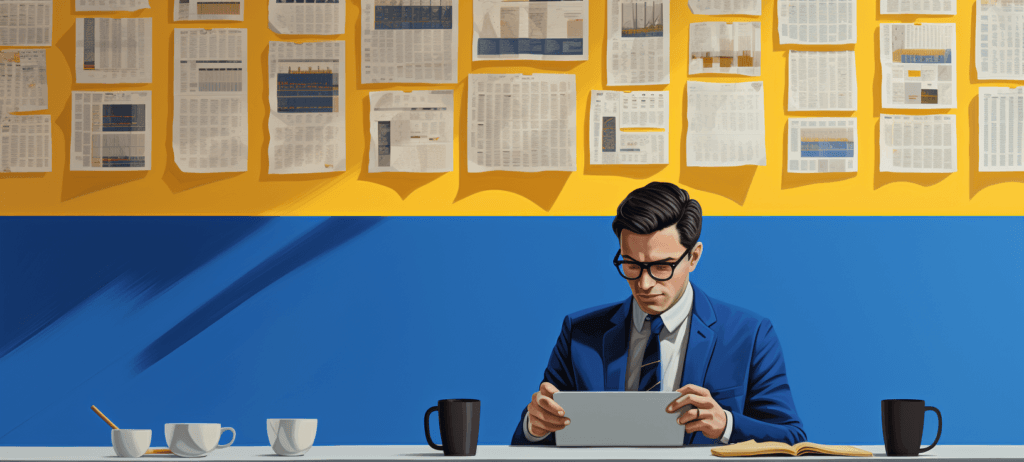-
 12 min. read
12 min. read
-
 Jessica Bonacci
Jessica Bonacci Multimedia Consultant
Multimedia Consultant
- Jessica is a Google Analytics-certified Multimedia Consultant at WebFX. She has created over 300 educational videos for the WebFX YouTube channel in the last five years, covering everything from the basics of digital marketing to more advanced data activation and AI usage. When she’s not researching and writing scripts, or bringing those scripts to life, Jessica manages the WebFX social media presence and engages with the WebFX audience. She specializes in video, content, and social media marketing but also loves SEO and many other aspects of digital marketing. When she’s not creating videos, Jessica enjoys photography, listening to music, reading, and catching up on the latest TV shows.
Transcript:
Is your site not ranking as well as you thought it would? Don’t lose hope! Even if you don’t have a ton of experience with SEO, I have 10 easy SEO fixes you can try on your own to boost your search engine rankings.
But wait! Before we get to the quick SEO tips, I should give you my secret for figuring out which aspects of your site need the most help. I’ll tell you after this intro.
Welcome back.
Are you ready to hear about my secret to quickly figuring out ways you can improve your SEO? My secret is… not actually that secret.
How to do a quick SEO analysis of your website
To easily identify areas of your site that need an SEO fix, use an SEO audit tool! We have our very own SEO checker on our website that makes finding those easy SEO fixes so simple.
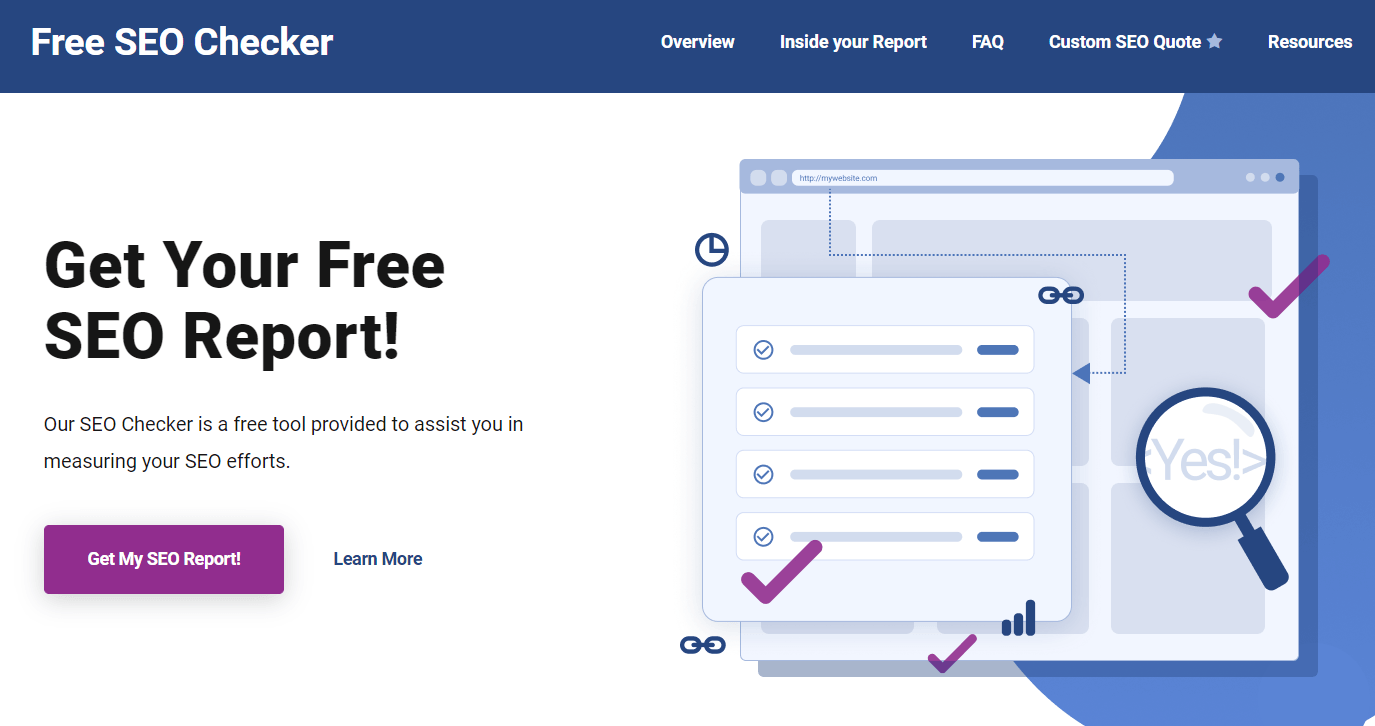 If you want to follow along with your very own SEO site report, head over to our SEO checker, add your information and get your SEO report You’ll then have access to some valuable SEO suggestions for your website to help you take action. Now that we’ve discussed doing the SEO analysis, I’ll dive into 10 SEO fixes so you can learn how to get better search engine rankings.
If you want to follow along with your very own SEO site report, head over to our SEO checker, add your information and get your SEO report You’ll then have access to some valuable SEO suggestions for your website to help you take action. Now that we’ve discussed doing the SEO analysis, I’ll dive into 10 SEO fixes so you can learn how to get better search engine rankings.
10 Easy SEO Fixes You Need to Know
1. Get your website on Google
Problem: Your website doesn’t show up in the Google search results at all. SEO Solution: Submit your website to Google using Google Search Console. If you’re wondering how to check if your site has been indexed by Google, it’s pretty simple. Type “site: your website” into the Google search bar and see if anything comes up. If your website appears in the results, it’s been indexed. If not, you need to manually submit it to Google. It’s possible
are preventing your site from showing up in the search results and submitting your website to Google Search Console won’t fix them. For example, Google might have penalized your site for using bad SEO practices, or you could have some issues with missing pages.
If your website doesn’t have any major issues, submitting it to Google Search Console is a great next step. If you don’t have a Google Search Console account, you’ll want to create one. Once you’re logged in, copy and paste the URL you want to be crawled into the search bar at the top. You’ll then see a report that tells you if your URL is on Google, and then an option to request indexing. Crawling and indexing can take a few weeks, so be patient once you make your request.
2. Get all of your site’s pages indexed
Problem: Not all of your website’s pages are indexed by Google. SEO Fix: Create an XML sitemap and submit it to Google. This easy fix goes hand in hand with the first one I talked about. XML sitemaps are documents that contain all of the URLs on your website you want a search engine to find. You have a few options when it comes to creating one. If you use a CMS like WordPress for your website, you can use a plugin to make a sitemap for you. You can also use an online XML sitemap generator, and depending on how big your site is, you can create one for free. Once you have your sitemap ready, head to Google Search Console and open the “Sitemaps” tab. There, you can submit your sitemap to be crawled and indexed. At the same time, you should also practice internal linking on your site. Having an XML sitemap doesn’t guarantee that all of your pages will be crawled, so an internal linking structure can help fill in any gaps. Whether you accomplish this through the main navigation menu or you include links to older pages on newer pages, you should always keep internal linking in mind for your website so crawlers can discover different pages.
3. Remove certain pages from the search results
Problem: Search engines have indexed pages you don’t want to show up in the search results. SEO Solution: Create a robots.txt file A robots.txt file contains all of the pages on your site you don’t want to be found by search engine crawlers. 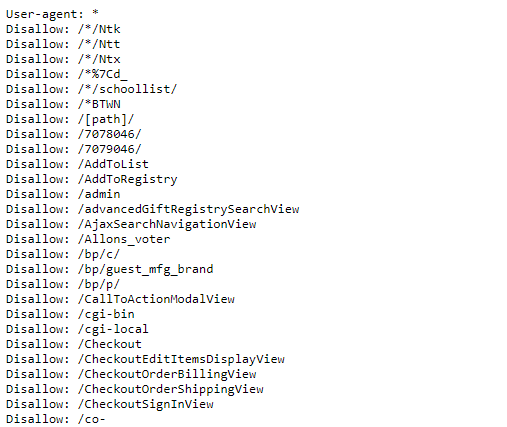 This could be used for many purposes, but some specific examples of pages you don’t want crawled are targeted landing pages from ad campaigns or thank you pages for when people take different actions on your site, like making a purchase or signing up for newsletters. With robots.txt, you can choose to block certain crawlers, like Google’s Googlebot and Twitter’s Twitterbot, or completely block all crawlers from finding different pages.
This could be used for many purposes, but some specific examples of pages you don’t want crawled are targeted landing pages from ad campaigns or thank you pages for when people take different actions on your site, like making a purchase or signing up for newsletters. With robots.txt, you can choose to block certain crawlers, like Google’s Googlebot and Twitter’s Twitterbot, or completely block all crawlers from finding different pages.
4. Get your pages ranking for target keywords
Problem: Your page isn’t ranking well for your target keywords. SEO Tactic: Add your target keywords throughout your content. Keywords help Google understand what your content is about. If you don’t write with keywords in mind, and your competitors do, you’re going to get outranked. You should be using keywords in places like your:
- Title tags
- Meta descriptions
- Page headings
- Page content
Stick to a core keyword and a few related keywords to help give context to your topic. When looking for keywords to target, go for long-tail keywords over short-tail keywords. Long-tail keywords are multi-word keywords that are typically easier to rank for, whereas short-tail keywords are much shorter and harder to rank for (although they do have a high search volume). Say you’re writing a beginner’s pie baking article and want to target the keyword, “pies.” Using a keyword tool, you can see that “pies” has a high search volume…but it’s not easy to rank for.
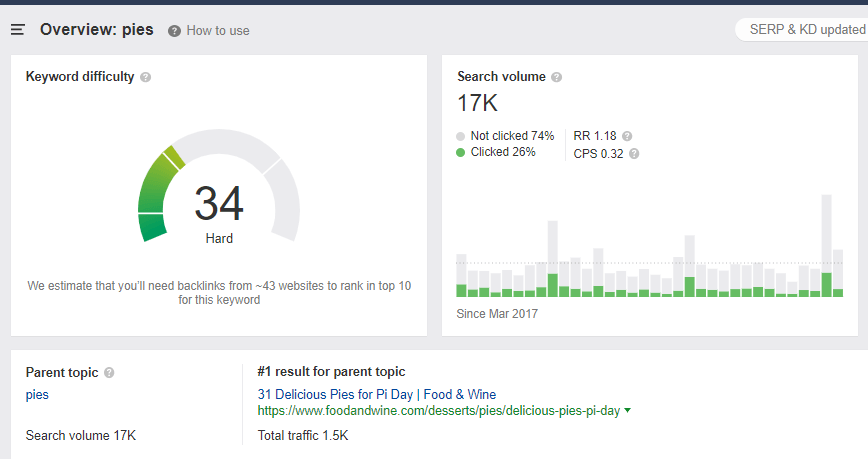
Plus, there is a good chance people are looking for bakeries that make pies or photos of pies instead of beginners’ recipes. If you target the keyword “easy pie recipes,” there’s still a significant search volume, but it’s a lot easier to rank for.
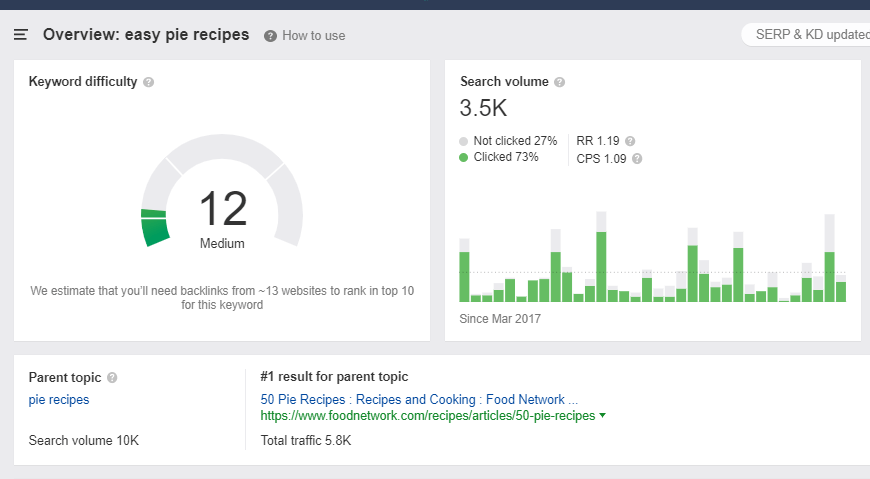
Since this is more specific, you know people searching for “easy pie recipes” are looking for easy pie recipes.
5. Meet the user’s search intent with your content
Problem: Your page uses keywords, but it’s still not ranking. SEO Tactic: Evaluate search intent and revise content as necessary. If you’ve optimized your page for the keywords you want to target, but it’s just not ranking, you might not be meeting the search intent. Using the pie example again, say you’re still targeting, “easy pie recipes,” but instead of your page is about recipes, it’s a poem about why you love easy pie recipes. That’s not what people are looking for when they search using that keyword. 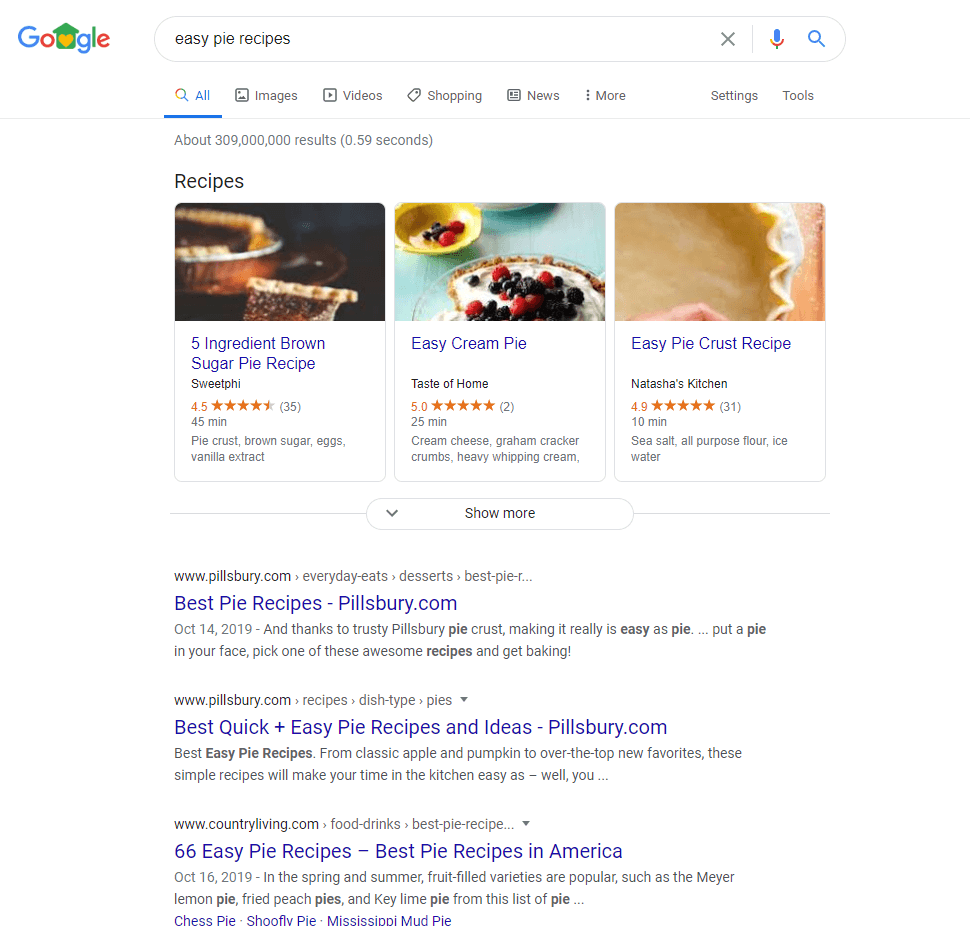 If people come across your page expecting one thing, but receiving another, they won’t spend a lot of time on the page, your bounce rate will be high, and Google will see it as a sign that your content doesn’t belong on the first page of the search results. When creating or revising content, you should always search for your keyword and see what the top pages for that keyword include. Maybe you need to add a new section or change the format to a listicle. The goal is to make content that meets the search intent but is better than all of your competitors’ content.
If people come across your page expecting one thing, but receiving another, they won’t spend a lot of time on the page, your bounce rate will be high, and Google will see it as a sign that your content doesn’t belong on the first page of the search results. When creating or revising content, you should always search for your keyword and see what the top pages for that keyword include. Maybe you need to add a new section or change the format to a listicle. The goal is to make content that meets the search intent but is better than all of your competitors’ content.
6. Don’t forget about SEO for images
Problem: Your images don’t add context for search engine crawlers. SEO Tip: Add alt text. Alt text helps your website in three ways.
- It helps visitors with visual impairments using a screen reader understand the photos on your page.
- It tells search engine crawlers what your photos are, giving an SEO boost if you use it properly.
- If for some reason your images don’t load, alt text tells users what is supposed to be in the empty space.
When writing alt text, remember to keep the language natural. So if you write something about ice cream and use an image like this…  …bad alt text would be:
…bad alt text would be:
- Ice cream man ice cream cart with ice cream cones selling ice cream umbrella ice cream
Better alt text would be:
- A man pushes an ice cream cart with a big umbrella
Adding alt text to your images is fairly simple. With a CMS like WordPress, there’s an option to add alt text when you upload images. If you’re using HTML, your code might look something like this:
- <img class=”img-responsive” src=”/img/ice-cream-man.png” alt= “A man pushes an ice cream cart with a big umbrella“/>
7. Create an internal linking structure
Problem: Some of your optimized pages aren’t getting as much traffic as others. SEO Solution: Add some internal backlinks. Sometimes, your page could use a little boost. If you use a tool like Ahrefs, you can see how many pages on your website are pointing to the page in question. Internal links can help create a hierarchy of pages on your website. The more links a page has pointing to it, the more important it seems to Google. I want to be clear: I’m not advising you to add a bunch of random internal links throughout your website. Use them on pages where it makes sense. Internal linking can also help crawlers find pages on your site. They crawl one page and find a link to another page, then another page, then another page, then another page, then another page…should I keep going?
8. Secure your website
Problem: Your website has a “not secure” warning. SEO Tactic: Get an SSL certificate to secure your website. Site security is a ranking factor, so it’s important to see an HTTPS in front of your URL instead of an HTTP. HTTPS helps encrypt data passed between your computer and a server. It’s especially important if your website collects personal information like emails or credit card numbers. This SEO fix might require some technical expertise, so contacting an experienced web developer can be a good option for securing your website.
9. Improve your site’s speed
Problem: Your pages load very slowly. SEO Tip: Optimize the different elements on your pages. Page speed is another piece of the ranking factor pie. I’m not sorry about the pie reference. Slow pages don’t create good user experiences, so you want to do everything you can to make them faster. You can test your page speed using Google’s PageSpeed Insights tool.
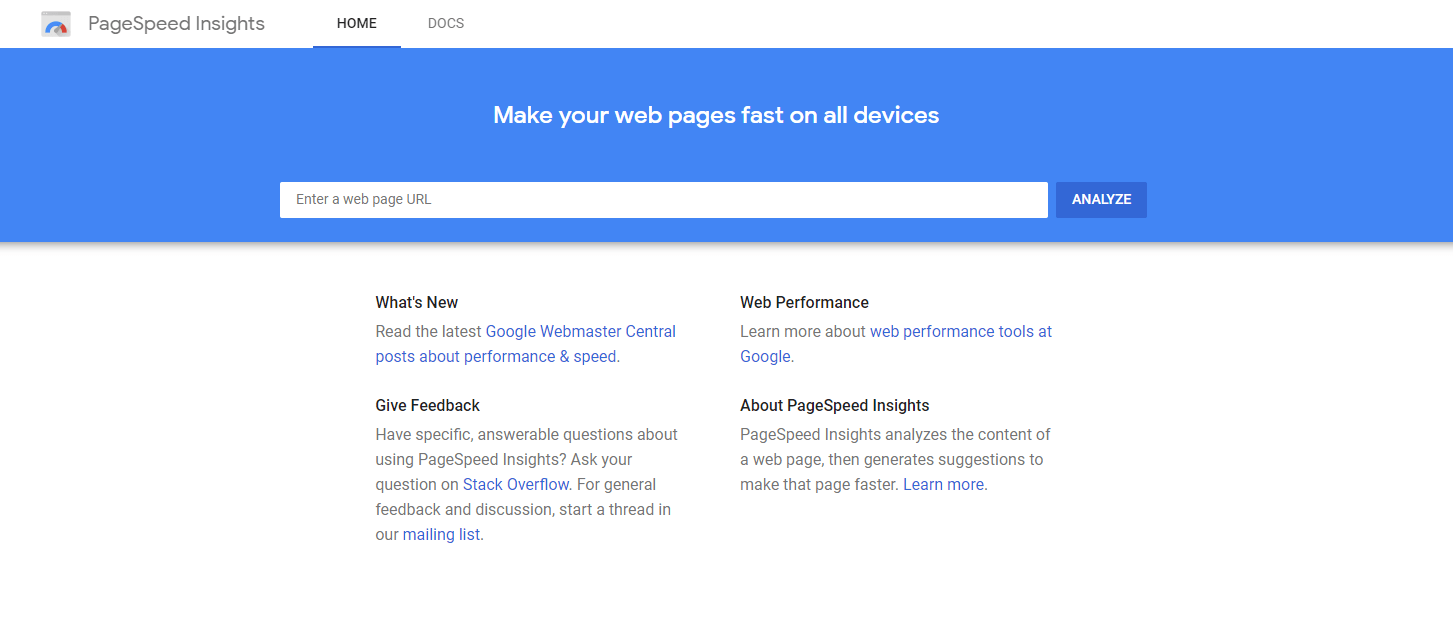
Similar to how our SEO checker works, when you plug in your website, Google will do an analysis of your page and give recommendations for how to fix it. One big factor in your page speed is the multimedia on the page. If you use images on your page, run them through an image compressor like Kraken.io so they don’t keep your page from loading. If you want to use videos on your pages, don’t host them directly on your site. Embed them using a video hosting platform like YouTube or Wistia. These little things can make a big difference.
10. Avoid error pages with redirects
Problem: People get 404 errors when they try to load some of your older pages. SEO Strategy: Redirect the old URLs to new URLs. Arriving on an error page can turn users away. If you’ve taken actions like deleting or moving pages on your site, you can’t forget about putting permanent 301 redirects in place to take users to a page that actually exists. Say you linked to a now-deleted page on your website in an article. A person stumbles upon the current article, tries to click the link to the old page, and is taken to a 404 error page. With a 301 redirect in place, someone clicking the old link will be taken to another live page on your site, creating a great user experience and making it more likely the person will stay on your website. The same happens if another website links to your old content. You can use a tool like Screaming Frog or Google Search Console to discover any errors on your site.
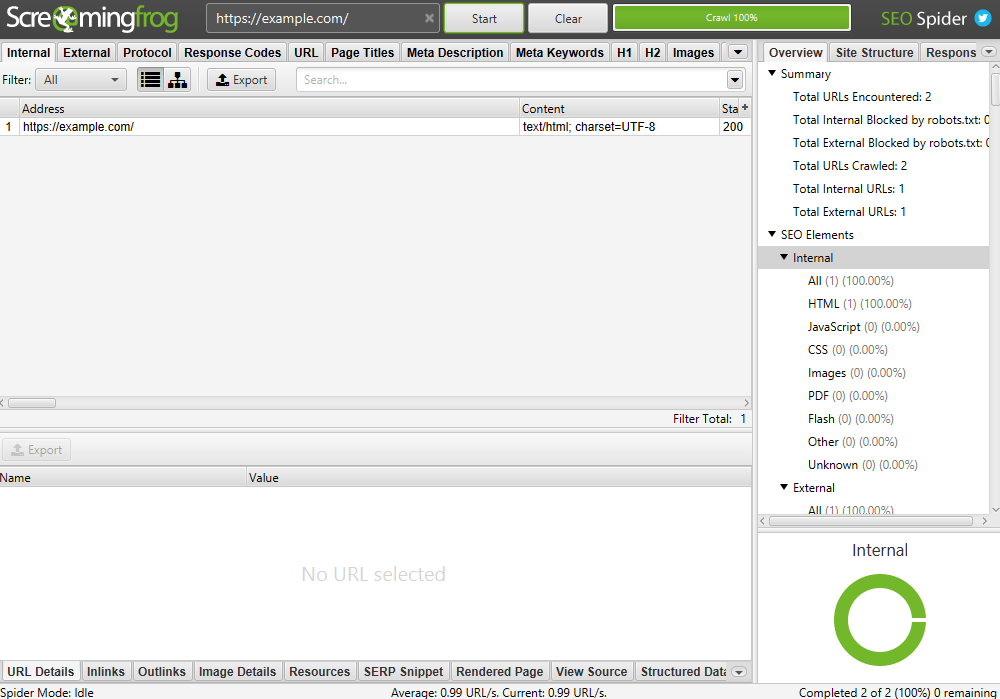
How you implement the 301 redirects depends on your web host, so it will take some research. Contacting a web developer might save you some time—and a major headache.
That’s all I have for you on 10 easy SEO fixes you can implement on your website.
Again, if you want a quick SEO analysis of your site so you can determine where to make easy SEO fixes, plug your URL into our SEO checker. If you want to learn more about any of these SEO tips, we have plenty of resources on the WebFX blog.
-
 Jessica is a Google Analytics-certified Multimedia Consultant at WebFX. She has created over 300 educational videos for the WebFX YouTube channel in the last five years, covering everything from the basics of digital marketing to more advanced data activation and AI usage. When she’s not researching and writing scripts, or bringing those scripts to life, Jessica manages the WebFX social media presence and engages with the WebFX audience. She specializes in video, content, and social media marketing but also loves SEO and many other aspects of digital marketing. When she’s not creating videos, Jessica enjoys photography, listening to music, reading, and catching up on the latest TV shows.
Jessica is a Google Analytics-certified Multimedia Consultant at WebFX. She has created over 300 educational videos for the WebFX YouTube channel in the last five years, covering everything from the basics of digital marketing to more advanced data activation and AI usage. When she’s not researching and writing scripts, or bringing those scripts to life, Jessica manages the WebFX social media presence and engages with the WebFX audience. She specializes in video, content, and social media marketing but also loves SEO and many other aspects of digital marketing. When she’s not creating videos, Jessica enjoys photography, listening to music, reading, and catching up on the latest TV shows. -

WebFX is a full-service marketing agency with 1,100+ client reviews and a 4.9-star rating on Clutch! Find out how our expert team and revenue-accelerating tech can drive results for you! Learn more
Try our free Marketing Calculator
Craft a tailored online marketing strategy! Utilize our free Internet marketing calculator for a custom plan based on your location, reach, timeframe, and budget.
Plan Your Marketing Budget

SEO Success with KOA

Proven Marketing Strategies
Try our free Marketing Calculator
Craft a tailored online marketing strategy! Utilize our free Internet marketing calculator for a custom plan based on your location, reach, timeframe, and budget.
Plan Your Marketing Budget
What to read next

